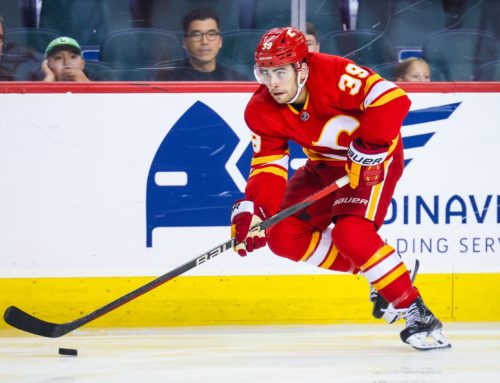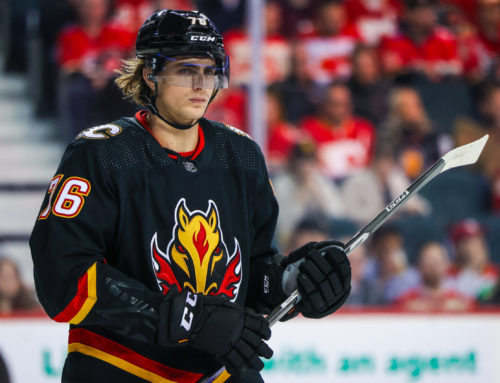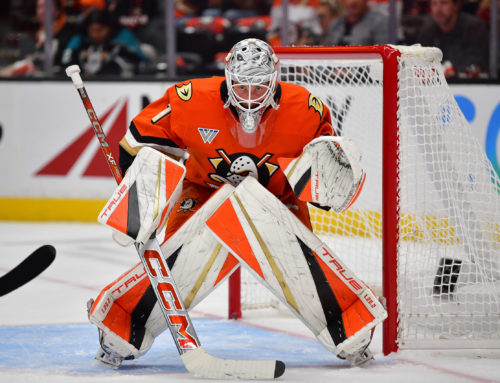
Whether it’s a five-goal game or fortnight, Patrik Laine has mesmerized the Winnipeg Jets and fantasy owners alike over the course of his first three NHL seasons. He’s got a wicked release and has the ability to score goals like very few others, yet he seems to struggle with other aspects of the game. A disappointing 30-goal and 50-point campaign left fantasy owners wondering what to expect in 2019/20.
Laine was selected second overall by the Jets in the 2016 NHL entry draft as a lean 6-5 right-winger that could score. At the time the pick was a no brainer and it would still be difficult to select many guys drafted behind him, given what we know three years later. An argument could be made for Matthew Tkachuk but even he probably gives you pause and makes you think, at least in real-world NHL versus fantasy.
Laine is an RFA for cap leaguers. He’s a tricky one to figure out on both term and amount at this stage. Some of it may depend on how the contracts play out with other top end RFA’s like Mitch Marner and Braydon Point. Or fellow finisher, Brock Boeser.
There has been some talk about Laine being traded or possibly given an offer sheet from another team, but we’re almost into September and neither has happened yet. This writer is expecting Laine to remain a Jet and sign somewhere between seven and eight million per year with term between six and eight years. 40-goal scorers just don’t come around that often and the Jets have to try and make this work, even if it appears they are overpaying on the front end.
So, where do we go with a 44-goal 70-point sophomore season followed by the dismal 50-point campaign we saw last year?
As noted earlier, Laine is a goal scorer so let's start with shots and shooting percentage. He loves to shoot and fantasy owners love shooters, or at least they ought to. Laine played the full 82 games for both of the past two seasons and put up an average of 243 shots. His shooting percentage was down almost six percent from 2017/18 where he converted 18.3%. In his rookie season, Laine converted at a rate of 17.6%. Laine’s ability to score is elite so a high career shooting percentage should be expected. We can predict closer to 18 percent next year than the 12 percent we saw last season. He seems to be settling into the 245 shot range which would translate into 44 goals.
Let’s look at Laine’s quarterly production breakdown from last year:
|
2018/19 Quarter |
GP |
G |
A |
PTS |
SOG |
PPP |
PPTOI |
TOI |
|
1 |
18 |
8 |
3 |
11 |
69 |
8 |
3:02 |
16:43 |
|
2 |
23 |
16 |
5 |
21 |
75 |
5 |
3:43
📢 advertisement:
|
18:08 |
|
3 |
21 |
4 |
4 |
8 |
62 |
5 |
3:36 |
16:01 |
|
4 |
20 |
2 |
8 |
10 |
39 |
5 |
3:34 |
17:55 |
Table courtesy of Dobber’s Frozen Tools (https://frozenpool.dobbersports.com/players/patrik-laine).
We can see right away that like most goal scorers, Laine is streaky. He already has seven career hat tricks and we can expect him to add to that next year. The second quarter looked so promising at the time. The elusive five-goal game against the St. Louis Blues on November 24th, was a seasonal highlight that is easy to remember, especially if you happened to find yourself squaring off in a weekly heads-up contest with the Laine owner. Some of us might still be bitter.
The other thing that jumps out right away to me is the low assist totals in the first three quarters. During that period he spent most of his time on a line with Brian Little and Nikolaj Ehlers or Jack Roslovic. For the fourth quarter, Laine spent most of his time beside Mark Schiefele and Blake Wheeler. He only scored two goals (see goal scorer streakiness), but eight assists is a more reasonable number playing on the top line.
A key to his success and besting his 70-point season will be linemates and ice time. If he can earn a spot on the top line and stay there for a good chunk of the season, we could see a career high in points. The power-play time has never been an issue for Laine and we should expect him back on the first unit with the green light to shoot as much as he’s able to.
At some point in his career, Laine is going to score 50 or more goals. Whether that’s due to an increase in shots and/or ice time, or a lucky year where he converts 20-25% of his shots, it’s going to happen. It could happen as early as next season but don’t bank on it at this stage.We should expect more of the same assist-wise as Laine has not proved to be strong away from the puck or as a setup man. Depending on deployment, somewhere between 25-32 assists seems reasonable.
This puts our projection for Laine between 69-76 points going into 2019/20. One thing to be wary of is Laine’s average draft position last year coming off his big sophomore season.
In Yahoo and ESPN leagues his average draft position was 13.7. That is too high and if he’s anywhere near that coming into this year's drafts we are going to want to pass. However, his average draft position will almost certainly fall after his latest performance, but we need to make sure we’re not drafting him as a point-per-game player until he proves that he is one. Don’t fall into the trap of a young player, with a big name, playing on a good team, and overdraft him.
If your league is heavily goal weighted then it’s a bit trickier with him and he will, of course, have to go a bit higher. If you’re in a dynasty or large keeper league patience is key.
We must remind ourselves that Laine is only 21 years old. He’s a young man that’s still maturing both physically and mentally. We may see him grow up and put down the video game controller next year or it may take a few more, but we should look at it optimistically. Give the Jets a chance to manage him properly as he matures and be patient with a goal scorer of this caliber. There is no need to draw a line in the sand at this stage of his career.





 FLA
FLA CHI
CHI NYR
NYR PIT
PIT L.A
L.A COL
COL CAR
CAR UTA
UTA SEA
SEA
 NYI
NYI TOR
TOR N.J
N.J STL
STL
